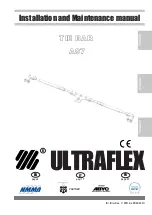
Introduction
Operating Parameters
1-6
PDM3700 Instruction Manual
Thermo Fisher Scientific
The PDM3700’s flow rate is 2.2 l/min
2.5% when calibrated at set point.
Temperature set points of the air heater and TE heater are set automatically
by selecting the appropriate operating temperature (
Figure 3–12
) when
programming a shift (Section 3). Programmed shifts can be set up in
advance using the WinPDM software. Currently, one shift-time can be
programmed. Manual samples can be started through a membrane switch
pad located on the top of the unit. All shifts require a 35-minute warm-up
period before data begins collecting. Second samples taken within a
programmed or manual sample do not require a separate warm-up.
The PDM3700 will accommodate programmed shift lengths from 1
minute to 24 hours in 1 minute increments. If sampling shifts longer than
12 hours are required, refer to MSHA guidelines as to performing this
sampling.
The system flow schematic provides an overview of the PDM3700’s flow
connections (
Figure 1–3
). The air flow enters the system through a cyclone
and is then drawn into a heated flow tube. After the air stream is heated, it
flows into the mass transducer where the particulate matter is deposited
onto the TEOM filter. The air flow is then directed through the hollow TE
(tapered element), through the air temperature and relative humidity sensor
block, past the flow differential pressure sensor, and finally through the
pump. The air stream then exits the system.
The PDM3700 maintains a constant volumetric flow rate, and reports
sampled volumes (m
3
) in volumetric terms (based on the ambient
temperature as measured near the cyclone).
The sampling system determines the ambient temperature and pressure for
flow rate calculations through the use of sensors that continually provide
updated information to the microprocessor system.
The PDM3700 is designed to operate in a position where the instrument
display is oriented at the top of the unit. The sampler includes an
integrated tilt sensor that automatically compensates the measurements
when the position of the monitor moves. This is used to compensate for
the natural motion of the sampler as an operator moves from one location
to another, and is also used to compensate when the vertical orientation of
the sampler changes.
If the sampler is placed or worn in a position where the display is upside
down, the sampler will detect this position and discard the real-time mass
and mass concentration data until this situation is corrected. While the
real-time mass and mass concentration data is discarded during this time,
the instrument will correctly determine the actual collected mass upon
being placed in the proper orientation and resume proper mass and mass
concentration measurements.
Operating
Parameters















































